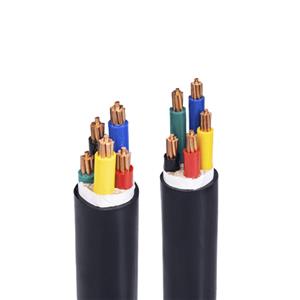What is the difference between flame-retardant cables, halogen-free cables and fire-resistant cables?
Flame-retardant cables, halogen-free cables and fire-resistant cables are very important wire and cable products in our lives. They have their own characteristics in terms of safety, environmental protection and fire resistance. So what is the difference between the three? The following wire and cable source manufacturer will take you to understand.
What is the difference between flame-retardant cables and halogen-free cables? Flame-retardant cables refer to cables that can slow down the spread of fire and reduce fire losses when a fire occurs. Halogen-free cables refer to cables that do not contain halogens (such as chlorine, fluorine, etc.). They produce less smoke when burning and are less harmful to the environment and human body.

Let's take a look at the difference between halogen-free cables and fire-resistant cables. We have already learned about halogen-free cables. Then fire-resistant cables refer to cables that can maintain normal operation for a certain period of time when a fire occurs. When a fire-resistant cable burns, its insulation layer and sheath layer can maintain good electrical properties and mechanical strength, thereby ensuring the normal operation of important equipment.
The difference between flame-retardant cables and fire-resistant cables is that flame-retardant cables mainly slow down the spread of fire when a fire occurs, while fire-resistant cables maintain normal operation when a fire occurs. The two have different focuses on safety.
The characteristic of flame-retardant cables is that they can slow down the spread of fire and reduce fire losses when a fire occurs. It is widely used in public places, buildings, factories and other places where fire safety is required. The characteristic of halogen-free cables is that they produce less smoke when burning and have less harm to the environment and human body. It is widely used in places such as subways, tunnels, airports, etc. that require a low-smoke and low-toxic environment. The characteristic of fire-resistant cables is that they can maintain normal operation for a certain period of time when a fire occurs, ensuring the normal operation of important equipment. It is widely used in important power transmission, control systems, fire protection systems and other places.
Through the above introduction, we know that flame-retardant cables, halogen-free cables and fire-resistant cables have their own characteristics, so we should judge according to actual needs when choosing. In public places, buildings and other places where fire safety is required, flame-retardant cables should be selected; in subways, tunnels, airports and other places where low smoke and low toxicity environment is required, halogen-free cables should be selected; in important power transmission, control systems, fire protection systems and other places, fire-resistant cables should be selected.

In short, flame-retardant cables, halogen-free cables and fire-resistant cables have their own characteristics in terms of safety, environmental protection and fire resistance. We should make choices based on actual needs.
- PVC-Insulated Cable
- 450/750V BV Single- Core Cu/PVC Cable
- 450/750V BVR Single- Core Cu/PVC Cable
- 300/500V Or 450/750V RV Single-Core Cu/PVC Flexible Cable
- 300/500V Or 450/750V RVV Multi-Core Cu/PVC/PVC Flexible Black Cable
- 300/500V Or 450/750V RVV Multi-Core Cu/PVC/PVC Flexible White Cable
- 300/500V Or 450/750V RVVP Multi-Core Cu/PVC/CWS/PVC Screened Flexible Cable
- 450/750V KVV Multi-Core Cu/PVC/PVC Control Cable
- 450/750V KVV22 Multi-Core Cu/PVC/STA/PVC Armoured Control Cable
- 450/750V KVVP Multi-Core Cu/PVC/CWS/PVC Screened Control Cable
- 450/750V KVVP2-22 Multi-Core Cu/PVC/CTS/STA/PVC Screened Armoured Control Cable
- 0.6/1KV PVC-Insulated PVC-sheathed Single-Core Power Cable
- 0.6/1KV PVC-Insulated PVC-sheathed Multi-Core Power Cable




